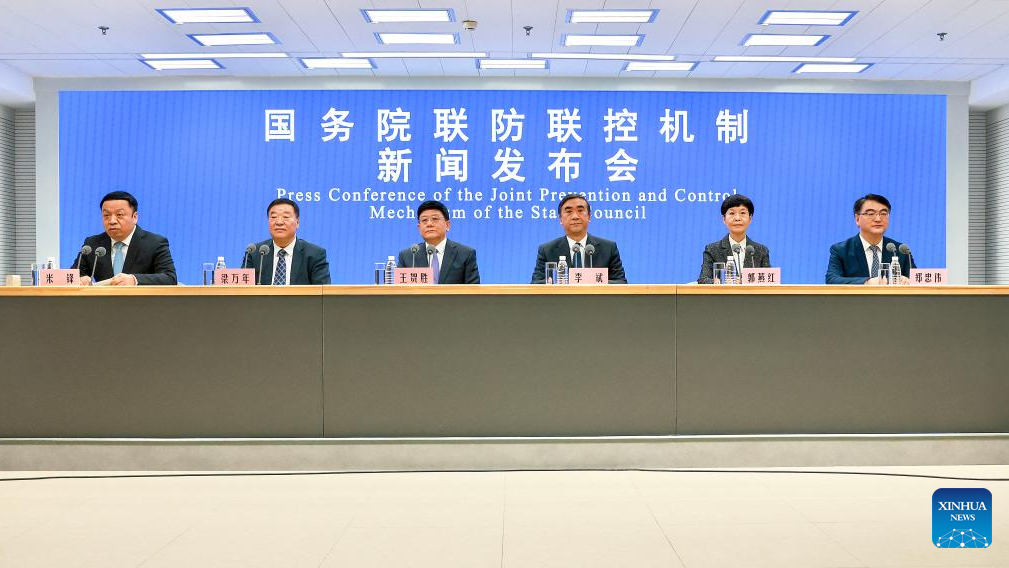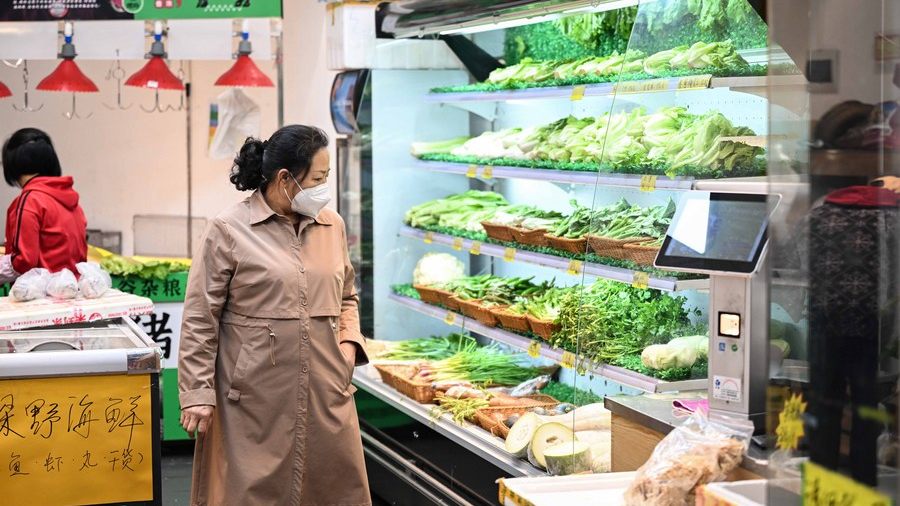
A press conference of the Joint Prevention and Control Mechanism of the State Council is held in Beijing, China, December 7, 2022. /Xinhua
A press conference of the Joint Prevention and Control Mechanism of the State Council is held in Beijing, China, December 7, 2022. /Xinhua
Editor's note: Daryl Guppy is an international financial technical analysis expert. He has provided a weekly Shanghai Index analysis for media for the Chinese mainland for more than a decade. Guppy appears regularly on CNBC Asia and is known as "The Chart Man." He is a national board member of the Australia China Business Council. The article reflects the author's opinions and not necessarily those of CGTN.
The COVID-19 virus spawned several variants as the virus evolved. This is the normal pattern of viral development, which is commonly called a "burning out." This means that over time the virus becomes less lethal and when this happens the management responses for containing the virus can change.
Burn-out occurs because the virus needs to survive. If it is too deadly – killing too many of its infected hosts – then the virus has trouble surviving. The less lethal variants kill their hosts less frequently and allow the variant to survive and infect more people in a way that becomes an irritant rather than a threat to life.
The common flu and the common cold are all end products of this process where once deadly diseases have become low level irritation that we have all learned to live with. Although it is correct to say that the latest variant, Omicron, is a variant of the COVID-19 virus, it is not the same as COVID-19 and this means it can be managed in a different manner.
Nonetheless, it's important to recognize that relaxing control measures so they become appropriate for the management of Omicron cannot be achieved while COVID-19 remains active. There are three paths for the elimination of COVID-19 and its replacement with the less severe Omicron variant.
The first approach is herd-immunity and was implemented by some European countries. This tolerates a high mortality rate as the population slowly develops immunity.
The second approach is to create a vaccination barrier to the spread of COVID-19. This is achieved through extensive vaccination. It is effective in suppressing COVID-19, but only when the vaccines have a very wide take-up in the population.
In the United States many people refused to get vaccinated so COVID-19 management was a mixture of the herd immunity approach and vaccines. This resulted in a high mortality rate.
The third approach is the dynamic zero-COVID approach, which relies on quarantine and isolation measure – lockdowns – to limit the spread of the virus. When applied rigorously it keeps mortality rates very low. However, it does bring with it economic and social costs if COVID-19 persisted for longer than first anticipated.
Australia used a combination of lockdowns and vaccines and this resulted in comparatively low mortality rates.

A grocery store in Liwan District of Guangzhou, south China's Guangdong Province, December 1, 2022. /Xinhua
A grocery store in Liwan District of Guangzhou, south China's Guangdong Province, December 1, 2022. /Xinhua
China's dynamic zero-COVID policy delivered a very low death rate and prevented the medical and hospital systems from getting overwhelmed as they were in the United Kingdom and United States. In the United Kingdom, the particularly short-lived lockdowns and low vaccination rates drove the hospital system to the edge of collapse.
The dynamic zero-COVID policy kept China isolated and bought time for additional drug and vaccination research and development, not just in relation to COVID-19, but also in relation to the variants that developed in response to wider global problems in bringing COVID-19 under control.
Due to a wide variety of circumstances and the varied combinations of measures used to bring COVID-19 under control, the world is now confronting a milder Omicron variant. Its impacts are often less than a seasonal flu, although like the flu, vulnerable sections of the population remain at a higher level of risk. It's to be anticipated that as Omicron evolves into additional variants that there may be occasional increases in severity, just as happens with flu seasons. In Western countries, COVID-19 has burned itself out and been replaced with Omicron as the dominant variant, and in some places, it is placing the same burden on the hospital system as a bad flu season.
In China, the dynamic zero-COVID policy has achieved the same outcome, effectively containing and eliminating COVID-19. It has been replaced by the milder Omicron variant. This has quickly led to changes in the methods required to manage the more benign infection.
Omicron still poses challenges and at times may call for a return of COVID-like control measures. This includes the compulsory use of masks and the occasional use of short-term and geographically limited lockdowns to contain concentrated outbreaks.
When a virulent virus "burns out" then we learn to live with its less lethal variants, just as we have learned to live with sometimes quite lethal seasonal flus. China's dynamic zero-COVID policy has allowed a rapid lifting on the measures necessary to control COVID-19 and its replacement with measures that are appropriate for managing less dangerous variants. Over time, the Omicron variant will also evolve and management approaches will change.
The road to this point has been a difficult challenge, no matter which COVID-19 control method has been applied. We can say COVID-19 has been controlled, but its variants will continue to challenge our health systems. Omicron will require an on-going optimization of prevention and control policies and this is now the challenge.
(If you want to contribute and have specific expertise, please contact us at opinions@cgtn.com. Follow @thouse_opinionson Twitter to discover the latest commentaries in the CGTN Opinion Section.)